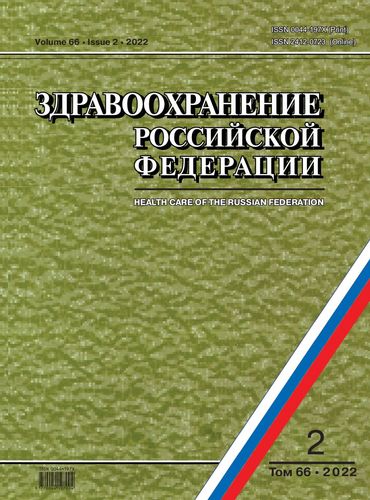Key aspects of the management of patient schools as telemedicine technology of modern healthcare
- Autores: Teplyakova O.V.1,2, Leshchenko I.V.1,2, Esaulova N.A.1,2, Sarapulova A.V.1,2
-
Afiliações:
- Urals State Medical University
- Medical Association «New hospital»
- Edição: Volume 66, Nº 2 (2022)
- Páginas: 101-107
- Seção: HEALTH CARE ORGANIZATION
- ##submission.dateSubmitted##: 25.10.2024
- URL: https://hum-ecol.ru/0044-197X/article/view/637739
- DOI: https://doi.org/10.47470/0044-197X-2022-66-2-101-107
- ID: 637739
Citar
Texto integral
Resumo
Introduction. A feature of healthcare in 2020 was the work in conditions of massive incidence of COVID-19, limited and redistribution of human resources. One of the right decisions in these conditions is to manage schools for patients, which allow simultaneous education and convey the necessary information to a large number of people. For the first time, the key aspects of the management of telemedicine schools for patients are presented.
The purpose of the study is to assess the feasibility of telemedicine schools for patients as a technology of modern health care.
Material and methods. The work was carried out by the method of a one-stage cross-sectional study of the questionnaire survey of participants of two schools cycles, conducted in an on-line mode.
Results. One thousand four hundred three patients took part in the cycle for rehabilitation after COVID-19. Feedback from 171 listeners was received for the questionnaire based on the Google platform. The number of participants in rheumatology schools was 197 people, the results of the questionnaire were received from 36 respondents.
Limitations of the study. The study analyzed two different in size and relatively small groups of participants who anonymously answered standardized questions about the appropriateness and quality of the training provided.
Discussion. Ten key principles of managing online patient education at the present stage were identified as follows: the use of distance technologies, the interest of a medical institution administration, the team approach, the technical possibilities of implementing schools, adaptation of lecture material for patients, the role of a qualified specialist in the educational process, patient participation, measurement efficiency and timely correction, development and improvement of educational technology for patients, desire for cooperation and exchange of experience.
Conclusion. The emergence of new opportunities related to online health education of the population, including educational activities for patients, opens up new prospects for improving clinical care aimed at promoting health and preventing disease.
Contribution of the authors:
Teplyakova O.V. — research concept and design, writing the text, compilation of the list of literature, statistical data processing.
Leshchenko I.V. — writing the text, statistical data processing, editing.
Esaulova N.A. — collection and processing of material.
Sarapulova A.V. — collection and processing of material.
All authors are responsible for the integrity of all parts of the manuscript and approval of the manuscript final version.
Acknowledgment. The study had no sponsorship. The team of authors expresses gratitude to the General Director of the Medical Association “New Hospital” Livshits Vadim Romanovich and the specialists without whose help this work could not be realized: Arefyev Georgy Borisovich — for the technical implementation of the idea and continued support for webinars; Pavlova Anna Sergeevna — for widely informing patients and providing invaluable assistance in adapting presentations and stylistic editing articles.
Conflict of interest. The authors declare no conflict of interest.
Received: January 22, 2021
Accepted: March 30, 2021
Published: May 04, 2022
Palavras-chave
Sobre autores
Olga Teplyakova
Urals State Medical University; Medical Association «New hospital»
Autor responsável pela correspondência
Email: oteplyakova69@gmail.com
ORCID ID: 0000-0003-2114-0419
MD, PhD, DSci., professor of the outpatient department of the Urals State Medical University, Ekaterinburg, 620028, Russian Federation.
e-mail: oteplyakova69@gmail.com
RússiaIgor Leshchenko
Urals State Medical University; Medical Association «New hospital»
Email: noemail@neicon.ru
ORCID ID: 0000-0002-1620-7159
Rússia
Natalya Esaulova
Urals State Medical University; Medical Association «New hospital»
Email: noemail@neicon.ru
ORCID ID: 0000-0001-9565-3570
Rússia
Anastasia Sarapulova
Urals State Medical University; Medical Association «New hospital»
Email: noemail@neicon.ru
ORCID ID: 0000-0002-3616-2365
Rússia
Bibliografia
- Marcus C. Strategies for improving the quality of verbal patient and family education: a review of the literature and creation of the EDUCATE model. Health Psychol. Behav. Med. 2014; 2(1): 482–95. https://doi.org/10.1080/21642850.2014.900450
- Rankin S.H., Stalling K.D., London F. Patient Education in Health and Illness. Philadelphia, PA: Lippincott Williams & Wilkins; 2005.
- Paterick T.E., Patel N., Tajik A.J., Chandrasekaran K. Improving health outcomes through patient education and partnerships with patients. Proc. (Bayl. Univ. Med. Cent). 2017; 30(1): 112–3. https://doi.org/10.1080/08998280.2017.11929552
- Stenberg U., Vågan A., Flink M., Lynggaard V., Fredriksen K., Westermann K.F., et al. Health economic evaluations of patient education interventions a scoping review of the literature. Patient. Educ. Couns. 2018; 101(6): 1006–35. https://doi.org/10.1016/j.pec.2018.01.006
- Farahani M.A., Mohammadi E., Ahmadi F., Mohammadi N. Factors influencing the patient education: A qualitative research. Iran J. Nurs. Midwifery. Res. 2013; 18(2): 133–9.
- Kalinichenko A.V., Afonin A.A., Anastasieva E.A., Khmelnitskaya Ya.V. Opinion of urologists on remote consultation of patients with urolithic illness at the out-patient level. J. Sib. Med. Sci. 2015; (5): 55. (in Russian)
- Giuliani M., Papadakos T., Papadakos J. Propelling a new era of patient education into practice-cancer care post-COVID-19. Int. J. Radiat. Oncol. Biol. Phys. 2020; 108(2): 404–6. https://doi.org/10.1016/j.ijrobp.2020.05.036
- Keçeci A., Toprak S., Kiliç S. How effective are patient education materials in educating patients? Clin. Nurs. Res. 2019; 28(5): 567–82. https://doi.org/10.1177/1054773817740521
- Bortsov V.A., Kulikovskaya I.V. Improvement of organization of health care schools for patients. J. Sib. Med. Sci. 2015; (2): 44. (in Russian)
- John A.M., John E.S., Hansberry D.R., Lambert W.C. Assessment of online patient education materials from major dermatologic associations. J. Clin. Aesthet. Dermatol. 2016; 9(9): 23–8.
- Roberts H., Zhang D., Dyer G.S. The readability of AAOS patient education materials: evaluating the progress since 2008. J. Bone Joint Surg. Am. 2016; 98(17): e70. https://doi.org/10.2106/jbjs.15.00658
Arquivos suplementares









